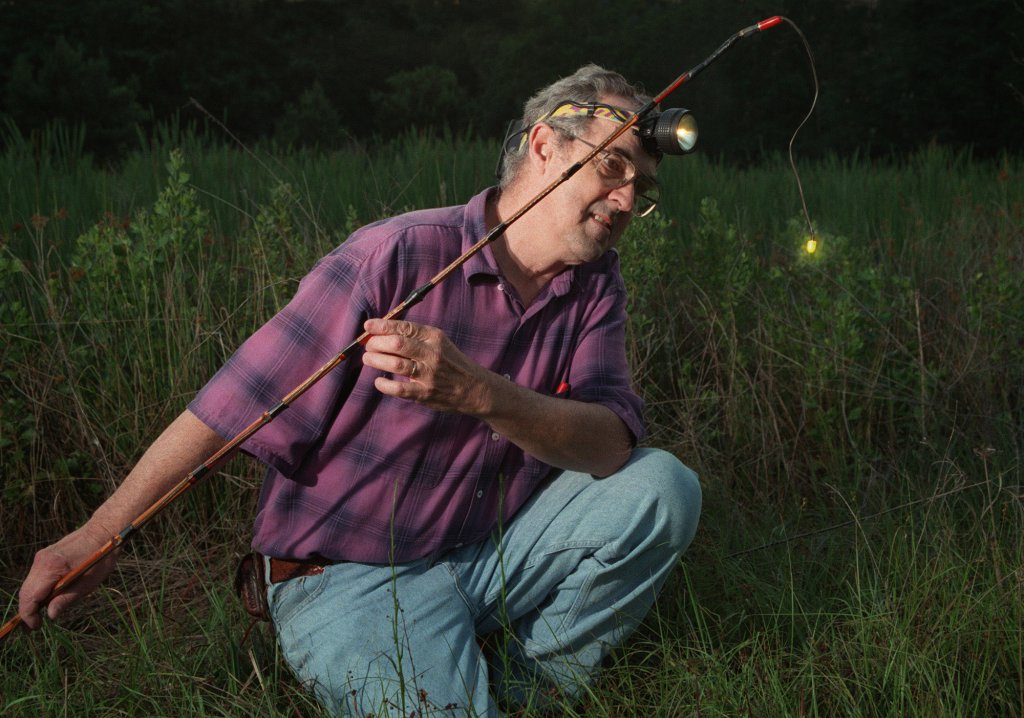A new study, co-authored by a pair of University of Florida researchers, presented a rare opportunity for most scientists: naming newly discovered species.
In this case, the three new species were discovered as part of a new subfamily of the beetle family Lampyridae, which are more commonly known as fireflies or lightning bugs.
“In the last 50 or so years, only a few families of living beetles have been discovered,” said Oliver Keller, one of the co-authors and a recent graduate of the UF/IFAS College of Agricultural and Life Sciences. “Even subfamilies are not that often discovered anymore.”
Keller was a doctoral student last year in the UF/IFAS department of entomology and nematology when a Montana State University graduate student, Vinicius Ferreira (lead author of the study), contacted him about a few unfamiliar beetles in the Montana Entomology Collection. DNA testing confirmed the non-bioluminescent adult specimens were actually a new subfamily of firefly (montana.edu/news/20617/msu-doctoral-candidate-discovers-new-firefly-lineage-hidden-in-scientific-collections).
Documentation indicated the creatures were collected in the mountainous regions of Mexico, which prompted the selection of a subfamily name that would pay homage to a beloved Mexican cultural icon, Roberto Gómez Bolaños (1929–2014), who went by the stage name Chespirito (“Little Shakespeare”).
But when it came to naming the species, Keller said it was decided to honor the pioneers in the study of fireflies.
One of them, Chespirito lloydi (seen in image at top, courtesy of Vinicius Ferreira), is named after Jim Lloyd, a longtime UF/IFAS entomologist who came to be known as the “Firefly Doc.” Lloyd’s career spanned over five decades, nearly all of which were spent at UF. He continued to maintain an office on campus even after retiring more than a decade ago, up until the pandemic sent him home this spring.
“Jim was really a pioneer for firefly research, a true naturalist,” said Marc Branham, another co-author and UF/IFAS entomology professor. “Anyone studying fireflies anywhere in the world often cites Jim’s work on North American fireflies. To this day, his field studies represent the most comprehensive and detailed documentation of firefly behavior that’s ever been done.”
Branham, who knew and collaborated with Lloyd for many years, said the “Firefly Doc” likely would have been too humble to accept the recognition of a species bearing his name.
Lloyd’s daughter, Kyle Durst, also immediately used the word “humble” to describe her father. Before he died in July, she said, he specified his wishes – “He didn’t even want an obituary.” Still, she added, the honor of having a new firefly species share his name was both deserved and fitting.
Durst said her father’s firefly studies often came home with him.
“I remember being in elementary school on the last day before summer break, and my parents picking me up in the Pontiac Catalina with a trailer hooked to the back,” she said. “We would be traveling all summer, chasing fireflies.”
She remembered another childhood occasion when he found a way to impress her friends, who had no idea what her father did for a living. In the darkness of their backyard, he brought out a fishing pole device he had created that had a light hanging from one end, and fireflies appeared. “Their mouths just dropped,” Durst said with a chuckle as she thought about the memory.

Both Durst and Branham also remembered Lloyd as a scholar with many talents.
“He was always learning something new,” Durst said, explaining that her father’s diverse interests ranged from Greek mythology to history to politics, and he even dabbled in poetry. The primary subject of his work still bled into his passions, though, with Durst recalling a poem about a firefly he wrote for her when she was a little girl.
Branham said one of the things he admired about Lloyd was his dedication to teaching.
“Jim was a Socratic teacher and would guide students’ discovery,” Branham said. “He was an incredibly popular teacher, too, even continuing to teach after he retired. There was one very popular firefly course – it had a waiting list every year – and he once mentioned to me that he had had three generations of students from the same family come through that course! He has turned more people on to science than anyone I have ever met.”
In addition to the large body of research articles Lloyd produced throughout his career, he also reflected on his life’s work in a 2018 book, “A Naturalist’s Long Walk Among Shadows: of North American Photuris,” which was also made available in full online at http://entnemdept.ufl.edu/lloyd/firefly/Lloyd_2018.pdf.
Unsurprisingly, citations to Lloyd’s work also appear throughout the new study describing the subfamily Chespirito.
“We hope that in the future, when new species are discovered in this genus, that people will continue this effort to name them after great firefly researchers,” Keller said.
The study appears in the journal “Insect Systematics and Diversity,” a publication from the Entomological Society of America: https://doi.org/10.1093/isd/ixaa014.
More on Jim Lloyd:
https://www.tampabay.com/archive/1996/08/27/the-firefly-doc/
https://www.heraldtribune.com/article/LK/20040401/News/605208474/SH
http://entnemdept.ufl.edu/news/2018-2021/August20.html
(Featured photo courtesy of Vinicius Ferreira.)
 0
0
